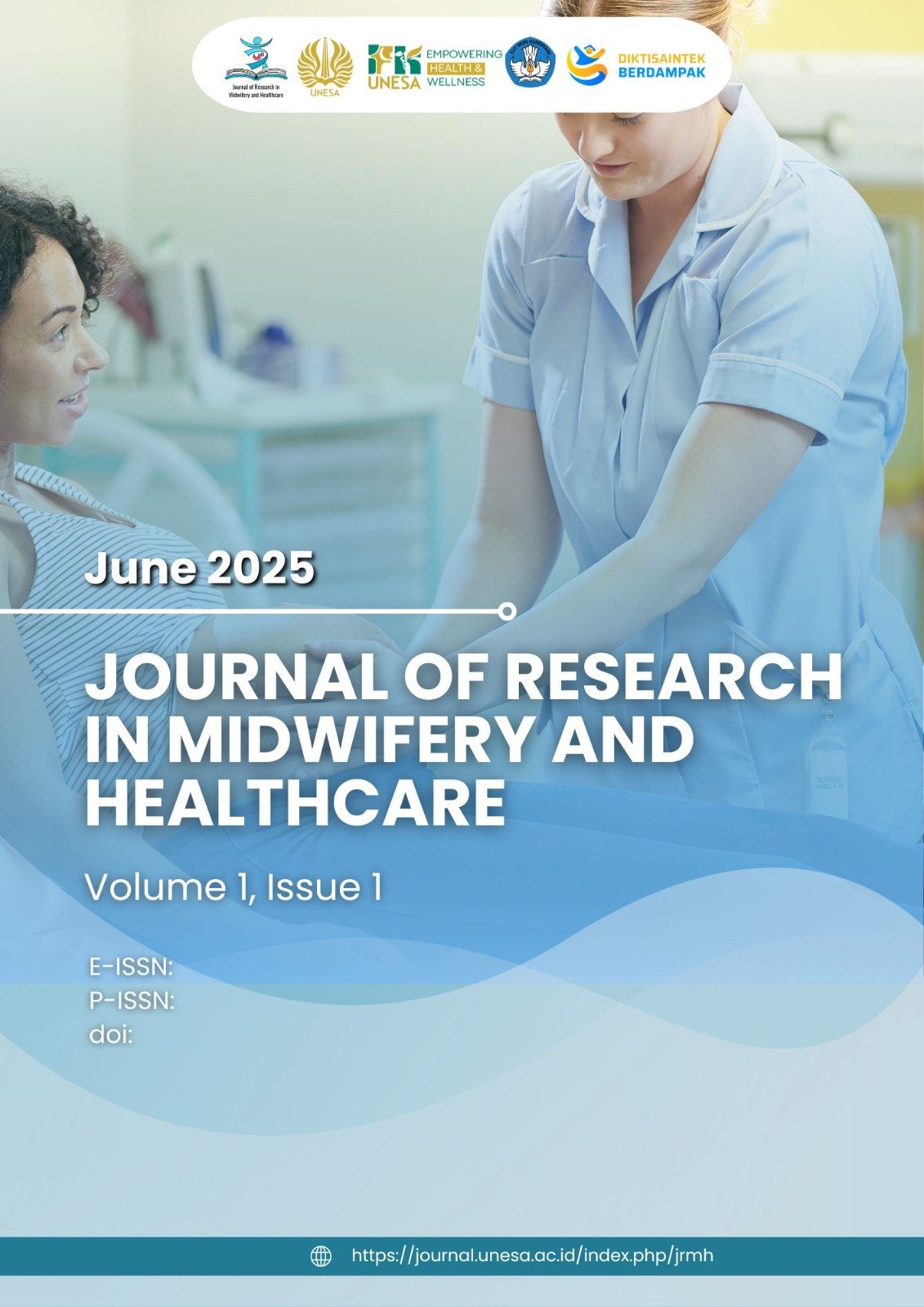The Relationship Between Early Breastfeeding Initiation and Bonding Attachment with Exclusive Breastfeeding
Abstract
WHO states the gold standard for child nutrition is exclusive breastfeeding. The national target for exclusive breastfeeding for 2020-2024 is 80%. In Indonesia, as of 2023, the target has not yet been reached, with a rate of 63.9%. In East Java province at 74.8%, Bangkalan district at 49.4%, and Blega Community Health Center at 48.14%. Exclusive breastfeeding is influenced by several factors, two of which are Early Initiation of Breastfeeding (EIBF) and bonding attachment. This study aims to examine the relationship between EIBF and bonding attachment with exclusive breastfeeding. This study uses quantitative research and a retrospective design with a survey method involving 53 mothers who have children aged 7-12 months at The Blega Health Center. Data was collected through interviews and a questionnaire. Data analysis using the chi-square test and contingency coefficient test. The research results indicate a weak relationship between EIBF and exclusive breastfeeding with a p-value of 0.019 and a contingency coefficient of 0.342, as well as a moderate relationship between bonding attachment and exclusive breastfeeding with a p-value of 0.001 and a contingency coefficient of 0.446. This shows that although EIBF is an important step for exclusive breastfeeding, bonding attachment has a stronger relationship with exclusive breastfeeding in mothers with children aged 7-12 months at the Blega Health Center. This study concludes that exclusive breastfeeding has a stronger relationship with bonding attachment than EIBF.
Downloads
Published
How to Cite
Issue
Section
 Abstract views: 80
,
Abstract views: 80
, PDF Downloads: 84
PDF Downloads: 84





 The Journal of Research in Midwifery and Healthcare (JRMH), published by the
The Journal of Research in Midwifery and Healthcare (JRMH), published by the 